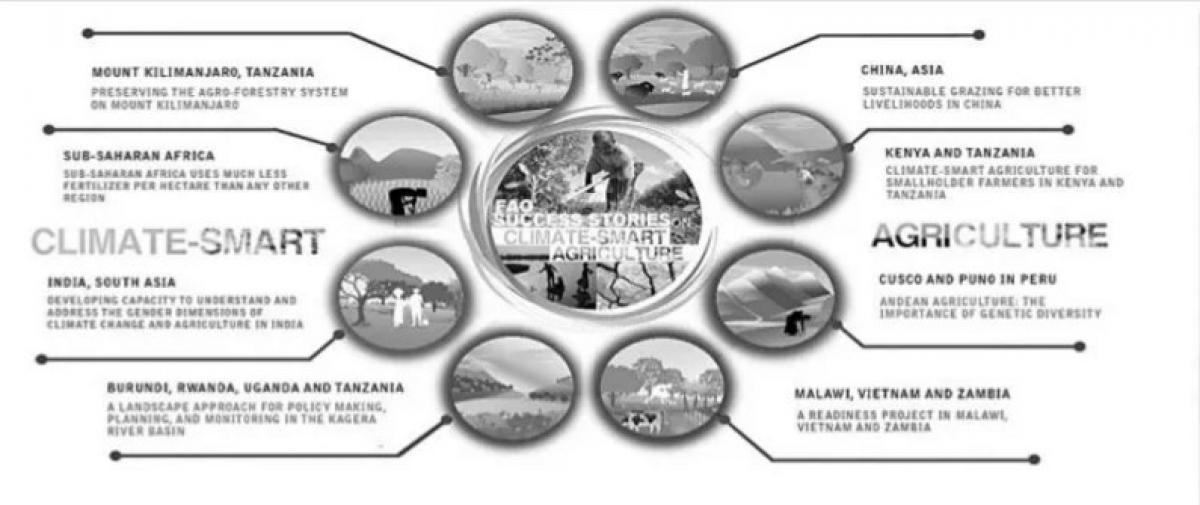Live
- Bengal Police solves horrific murder of schoolteacher
- Cryptocurrency fraud: Sharad Pawar slams BJP for naming his daughter
- Vehicle checks should be carried out at State border: Collector
- Country’s progress depends on women empowerment: Bhatti
- Aryan Khan's Debut OTT Series Stardom Set to Feature Cameos from Shah Rukh Khan, Karan Johar & More
- Voting a precious privilege, all must exercise: Tata Sons Chairman
- Lionel Messi to play international friendly match in Kerala in 2025
- J'khand records 31.37 pc voter turnout, polling officer in Deoghar removed over 'bias'
- 116 slum dwellers get house allotment letters
- Sunita Williams Feasts on Shrimp Cocktails in Space, But Fresh Food is Major Struggle
Just In

“The rift has accelerated since end of the last year\", reported all the major news agencies in North America and elsewhere. \"It may get close to a full break, never seen before in the history.\"
“The rift has accelerated since end of the last year", reported all the major news agencies in North America and elsewhere. "It may get close to a full break, never seen before in the history."
This "breaking news" is about Antarctica's fourth-largest ice shelf, Larsen C, measuring 48,600 sq km, five times the area of Israel, irreversibly breaking away, several kilometres at a time, from its mother continent due to exceptionally high temperatures.
NASA and British Antarctic Survey scientists have in the last three decades observed a dramatic collapsing of smaller parts, Larsen A and B, as noted by the Nobel Prize-winning Inter-governmental Panel on Climate Change (IPCC). Larsen C, which is the largest of the three, is now clinging by the umbilical cord of about 25 km before finally breaking away.
The ABC drama is captivating, because these would constitute some of the world's biggest icebergs ever to break off from an Antarctic ice shelf. What is more, it is taking place early in 2017, when the ABC of the "disruptive" policies of US President Donald Trump on climate change have also started unfolding.
The year gone by has decidedly broken the temperature record as the warmest year since modern observations began in 1880. The National Snow and Ice Data Centre at Boulder, Colorado, has recorded that the cover of Arctic ice, which expands and contracts in an annual cycle during winter and summer, probably reached its maximum size this year on March 7, when it spanned 14.42 million square kilometres, breaking the record as the smallest winter maximum extent ever observed in records dating to 1979.
While melting of the floating icebergs does not cause the sea level to rise, melting of the large volume icebergs makes the way to glaciers from the land mass of the Arctic and Antarctic to pour into the oceans, resulting in the sea level rising. What is more frightening is that loss of ice would cause more global warming because the heat from the Sun would get absorbed and not get reflected back due to loss of white cover of ice. The vicious feedback loop could trigger record-breaking runaway warming never seen in human history.
This is called permafrost, because of the permanency of ice there. A study released by Nature Climate Change on April 10 has revealed that global warming will thaw about 20 per cent more permafrost than previously thought, potentially releasing significant amounts of greenhouse gases like methane and carbon dioxide trapped under the layer of ice into the Earth's atmosphere.
Around 35 million people live in the permafrost zone. A widespread thaw could cause the ground to become unstable, putting roads and buildings at risk of collapse. Such runaway release of greenhouse gases has already begun as the Arctic is warming at around twice the rate as the rest of the world. There is fear of not only mass coastal migration of human population due to rising sea levels but also from high latitude regions. The entire biodiversity is likely to be in mass-migration in search of survival.
Rising temperatures and sea levels, increasing acidity of the oceans due to additional absorbed carbon dioxide, escalation of intensity and surge of frequency of extreme weather events like droughts and floods are forcing land-based bio-species to move polewards by an average of 17 km per decade -- and marine species by 72 km per decade as per new analysis recently presented by the University of Tasmania.
The New Scientist magazine said in March 2017 that ticks that spread Lyme disease in animals and humans is predicted to cause major Lyme disease outbreaks in areas that have not faced the threats any time before. The benefits to humans being provided by other species, and the complex ecosystems they live in, are also at risk due to rising temperatures and acidity of oceans.
A pioneering study by Science last year stated that current warming (just one degree Celsius) has already left an obvious mark on 77 of 94 different species and ecological processes. The study hints at possible genetic changes due to climate change and even physical traits including body size and shape.
A study released in March by the American Psychological Association (APA) says that climate change also takes a significant toll on mental health. The loss of personal and professional identity, loss of a sense of control, feelings of helplessness, fear and fatalism, and worry about actual or potential impact of climate change can lead to stress that can build over time and eventually lead to stress-related problems such as substance abuse and depression, according to research reviewed in the report. Do not we already witness this transformation among the leaders and among us who elect them? (The writer is Chairman of TERRE Policy Centre)
By Rajendra Shende

© 2024 Hyderabad Media House Limited/The Hans India. All rights reserved. Powered by hocalwire.com







